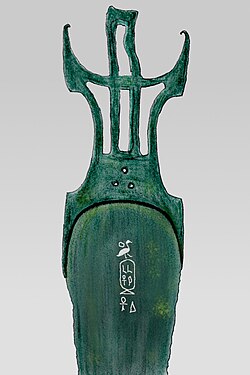| Seuserenre Bebiankh | |||||||||||||||||||||||||||||||||||||||||||
|---|---|---|---|---|---|---|---|---|---|---|---|---|---|---|---|---|---|---|---|---|---|---|---|---|---|---|---|---|---|---|---|---|---|---|---|---|---|---|---|---|---|---|---|
 Bronze dagger bearing the inscription "The son of Ra, Bebiankh, given life". British Museum EA 66062. | |||||||||||||||||||||||||||||||||||||||||||
| Pharaoh | |||||||||||||||||||||||||||||||||||||||||||
| Reign | 12 years 1603-1591 BC 1600-1588 BC | ||||||||||||||||||||||||||||||||||||||||||
| Predecessor | Semenre | ||||||||||||||||||||||||||||||||||||||||||
| Successor | Sekhemre Shedwaset or Seneferankhre (Helck) | ||||||||||||||||||||||||||||||||||||||||||
| |||||||||||||||||||||||||||||||||||||||||||
| Died | 1591 or 1588 BC | ||||||||||||||||||||||||||||||||||||||||||
| Dynasty | 16th Dynasty | ||||||||||||||||||||||||||||||||||||||||||
Seuserenre Bebiankh was a king in Upper Egypt during the Second Intermediate Period. He is often placed in the 16th Theban Dynasty and his prenomen or royal name is mentioned in the Turin King List with a reign of 12 years.
Contents
Based on an interpretation of the Turin King List, Bebiankh was succeeded either by a poorly known king named Sekhemre Shedwast. [1] Also suggested is the equally shadowy ruler Seneferankhre Pepi IV. [2]